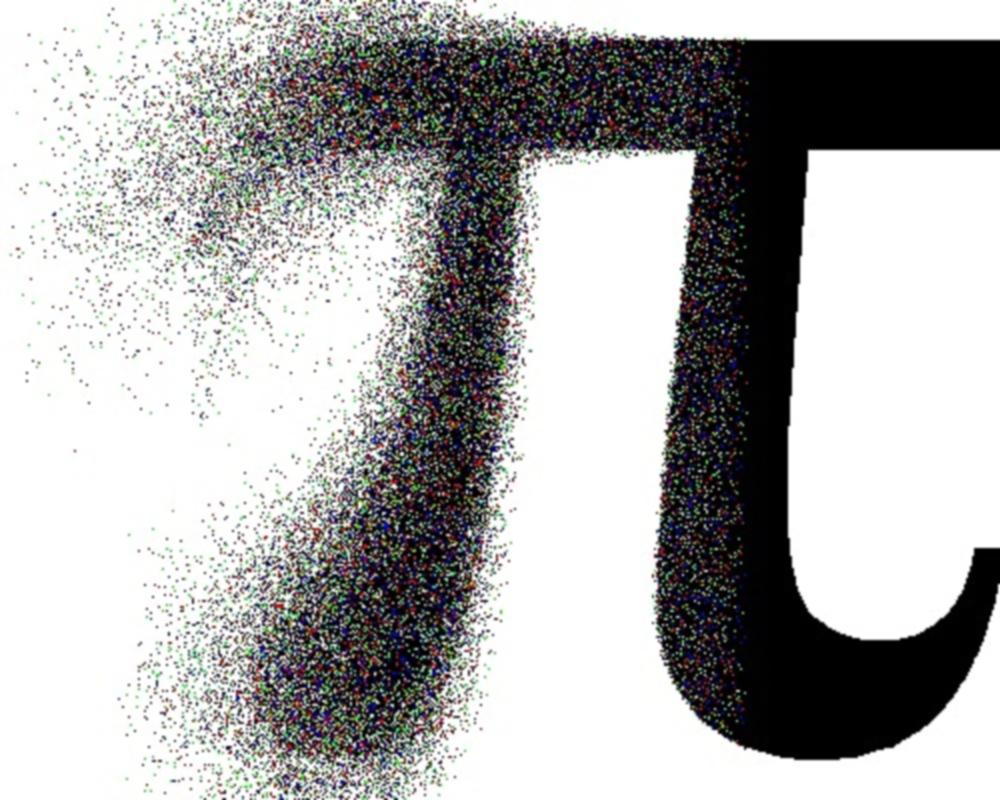Approximating Pi
Construction Method
Point of departure: the converging series pi = 4(1 – 1/3 + 1/5 – 1/7 + 1/9 ...).
Each convergence gets a time window of 5040 samples (twice the lowest common multiple of the numbers 1-10), in which ten square wave partials of frequencies 8¾n Hz and amplitude 2^d are set up, '8¾' deriving from the 5040 samples, 'n' being the partial number and 'd' the n-th digit in the convergence's decimal representation; e.g. for '3.141592654', the ten partials' amplitudes are 2^3, 2^1, 2^4, 2^1 ,2^5, 2^9 etc., thereafter rescaled by the sawtooth-spectral factor 2pi/n, where 'n' is still the partial number. The convergences make the digits stabilize from left to right to a value approaching pi, the resultant timbre moving from turbulence to constancy over 4 x 10^9 x 5040 = 20.16 x 10^12 samples or ~14½ years. The installation can be pitch-shifted (by sample-dropping) and/or time-truncated. Here the six sound channels are transposed from 8¾ Hz to frequencies 9, 28, 50, 72, 96 and 123 times higher; the duration is a number of hours, during which the leftmost digits can be seen to gradually stabilize.
